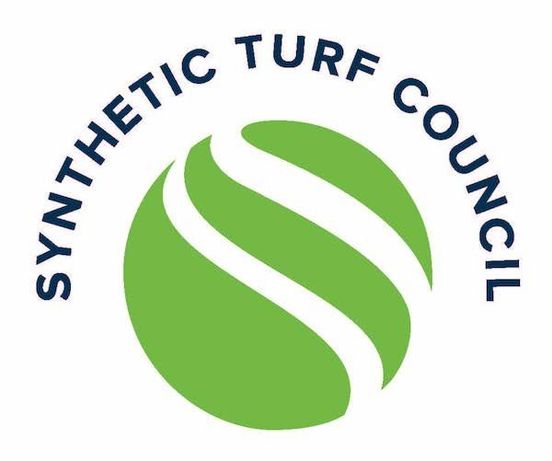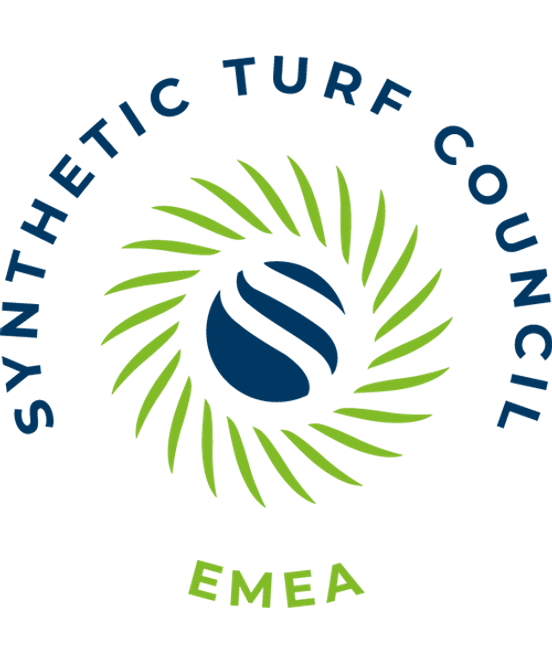One Turf

Introduction
FIFA, FIH and World Rugby have invested large amounts of resources in developing long pile artificial turf requirements that reflect best practice in the areas of player welfare, performance, sustainability and longevity. All three federations recognise the benefit of artificial turf at all levels of their respective sports and, while each has unique playing characteristics, collectively support the development of, and investment in, multi-use community fields. While short-pile products are the preferred surface for hockey, the FIH recognises that long pile (3G) surfaces can also aid hockey development where the national association permits it.
It is the intention of this document to better inform users of the benefits of testing and continuing to test against these requirements.
With this in mind, FIFA, FIH and World Rugby have combined resources to identify best practice for multi-use long pile community based fields and provide information to facility owners, managers and investors in ensuring that their fields achieve the highest possible standards. Some sports have, in addition to those listed here, additional requirements for elite level fields, details of which can be sourced from the individual sports.
The organisations from within the industry who have offered support to this initiative indicates the importance of trying to ensure better quality artificial turf products continue to be installed globally.
It should be noted that each federation has their own certification process and that application of these best practices does not guarantee that certification by one or any of the federations will be achieved. Other sports may also have additional requirements which must be met before they can be played on the field.
The information contained below is in consideration of what a multi-use long pile community field should achieve. It is not intended to be used for certification purposes, nor is it sport specific but it is considered that, if complied with, the field will be suitable for general use.
This document is separated into three parts:
- Basic requirements for an existing field
- Standard considerations for future fields
- Identification of sport specific requirements
For all of the tests listed below federations stress the importance of having the testing completed by a knowledgeable and accredited test institute. Many federations provide accreditation processes for such test institutes which incorporates a rigorous round robin testing process with regular re-accreditation required. Achievement of certification of fields for each of these federations is only possible through testing by one of these accredited test institutes.
Basic Requirements for existing fields
While each of the three federations recommend that the full battery of tests required by their certification processes are met, existing fields may not be capable of achieving this. It is important to note that World Rugby require all fields intended to be used for rugby to be tested to and to comply fully with Regulation 22 requirements before any contact rugby, whether training or matches, takes place on the field.
With this in mind, facility owners should content themselves that the basic performance requirements listed below are met by their fields. The data indicates the levels for each parameter achieved by good quality natural turf surfaces for all sports, all of which have been extensively tested to determine these requirements. Statistical information available has indicated that there is no difference in injury rates between those occurring on good quality natural turf surfaces and those occurring on compliant artificial turf surfaces.
A brief explanation of the risks of each parameter being outside the recommended limits is provided in each case.
Click here to download a pdf of the tables in this document
Shock Absorption
Too Low: The surface will feel too hard and result in an increased risk of injury to players from compaction of the meniscus in the knee joints and the spinal column.
Too High: The surface will feel heavy to the players and will sap their energy tiring them out quicker.
Vertical Deformation
Too Low: The field does not have enough compressibility and will feel hard to run on resulting in potential joint and muscle soreness.
Too High: The field will deform too much under the player which may result in overstretching of ligaments.
Rotational Resistance
Too Low: The players are more likely to slip and have less confidence in their foot holding. It makes change of direction much more difficult and slippage can result in over extension injuries.
Too High: The natural slippage that is expected is reduced meaning that the likelihood of excessive grip between the boot and the surface increases the risk of potential joint injuries, especially ankle and knee.
Impact Attenuation(HIC)*
Too Low: The likelihood of serious injury occurring as a result of a player hitting their head on the surface is increased.
Too High: There is no real risk to having a high HIC, however to achieve higher values, the likelihood of other requirements not achieving their required levels is increased.
Ball Roll (large ball)
While Ball Roll is a specific playability requirement for football and hockey, the use of Ball Roll as a tool to identify the condition and orientation of the fibres is recognised by all sports. It is included here as a maintenance indication tool and also an on-field guide to the potential for friction burns and abrasion to occur. A high Ball Roll indicates that the fibres may be lying flat and that this risk is increased.
Vertical Ball Rebound(large ball)
Too Low: The ball will bounce less than is expected resulting in a deadening of the ball.
Too High: The surface will make the ball bounce an unusually high amount.
These parameters should not be taken independently. A field’s performance can only be truly ascertained by completion of all of these parameters and the potential effect that changing one could have on the others considered.
Standard considerations for future fields
The basic requirements above only indicate the achievement of the field at any one point in time. In addition, they give no indication of the potential, or likelihood, that the field will continue to meet these requirements as it is used, and wears, as a result of this use. To provide comfort that the investment being made will be reflected through the field’s performance, while withstanding the level of use intended, there are tests that can be carried out. These tests are not practical (and in some cases impossible) to be carried out on site and so they must be undertaken under laboratory conditions. Once the laboratory requirements have been met it is important to ensure that the product tested in the laboratory is the same product that is tested on the field. This creates the need to include both laboratory tests and identification tests which will assist in giving the investor peace of mind that their investment will last as long as expected and continue to perform to the optimum level throughout its expected lifetime.
Note: Achievement of the longevity and continued quality expected is based on two main factors. It is important to be aware of the usage levels of the field as over-use can, and will, have an effect on the wearing of the field. In addition, the need for regular maintenance of a field is imperative as it assists in resisting against wear, when completed properly, makes the surface more enjoyable for players and provides continuity in performance standards. The manufacturer of the product installed is best placed to recommend the most appropriate maintenance techniques and regimes.
Laboratory Testing
The laboratory testing requirements set down for fields for their lifetime are separated into three categories:
- Performance Requirements
- Longevity Requirements
- Identification Requirements
Full details of all the requirements for laboratory testing are available in Appendix 1.
Performance Requirements
These tests simulate the surface performance under varying extremes of surface condition and preparation. The tests and requirements are the same as those listed in the basic requirements above. There are three additional tests undertaken on ball performance in the laboratory:
- Angled Ball Rebound
- Skin/Surface Friction
- Skin Abrasion
The individual tests are completed under various conditions:
- Dry
- Wet
- Frozen -5°C
- Hot +50°C
- After Simulated Wear
In addition to player and ball performance requirements the following aspects of the surface are tested:
- Tensile Strength for:
- Yarn(s)
- Joints (bonded and stitched)
- Carpet backing
- Shock pad (where present)
- Water Permeability
These are tested to ensure that the surface can withstand the day to day use that it is likely to experience.
Longevity Requirements
The purpose of this document is not just to ensure that the surface performs in the correct manner but also to ensure that it performs for the expected lifetime of the carpet. To ensure this, a number of techniques are used to simulate and artificially wear the product as a whole as well as the individual components where appropriate:
- Temperature extremes are used to ensure that the product performs as required in a wide range of temperatures (usually -5°C and +50°C).
- Simulated wear has been developed to mimic the wear characteristics of a field in the laboratory.
- Immersion in hot water is the means used to mimic the weakening of seams in the surface.
- Exposure to Ultra-Violet light replicates the ageing that can occur and potentially change the performance characteristics of components such as the yarn(s) and infills of the system. Exposure levels (using EN 14836) are now set at 5,000 hours to ensure that even in the harshest climates the surface will continue to perform as expected.
Overview of test conditions and summary of requirements
Click here to download a pdf of the tables in this document
Identification Requirements
The restriction on having to perform many of the tests above under laboratory conditions means that a separate method is required to ensure what was tested in the laboratory was actually installed on the field. The identification tests below are used to achieve this, and ensure that the installed product is what was paid for, and that it will achieve the requirements met in the laboratory.
The tests are completed in the laboratory and then again on the field and the results compared to ensure that they are within the acceptable range for each parameter.
Tests are done on the individual components of the surface:
- Carpet (including yarns)
- Infills
- Shock Pad (where applicable)
For laboratory tests, measured values are compared against those provided by the manufacturer. For field tests, measured values are compared to a combination of manufacturer’s declarations and values recorded during laboratory tests.
It is recommended that fields are tested at regular intervals during the lifetime of the surface. World Rugby Regulations require that successful retesting is completed every two years to maintain certification and enable the field to continue to be used for rugby while FIFA require retesting every four years (for FIFA Quality surfaces). The tests indicated below are required for initial test only, unless significant repairs have been made to the surface.
Click here to download a pdf of the tables in this document
Sport Specific Requirements
The above standard considerations are aligned very closely with all individual performance specifications from the participating federations. It is no coincidence that the requirements for all three certification processes are almost identical with small variations due to the differing nature of the individual sports. As a result, achievement of these standards requires only a minimal additional requirement to achieve any one of the sport specific certifications. It should be noted that the following is an indicative list of additional requirements that are in place for certification to be achieved for each of the sports. The individual sports should be consulted for full details:






